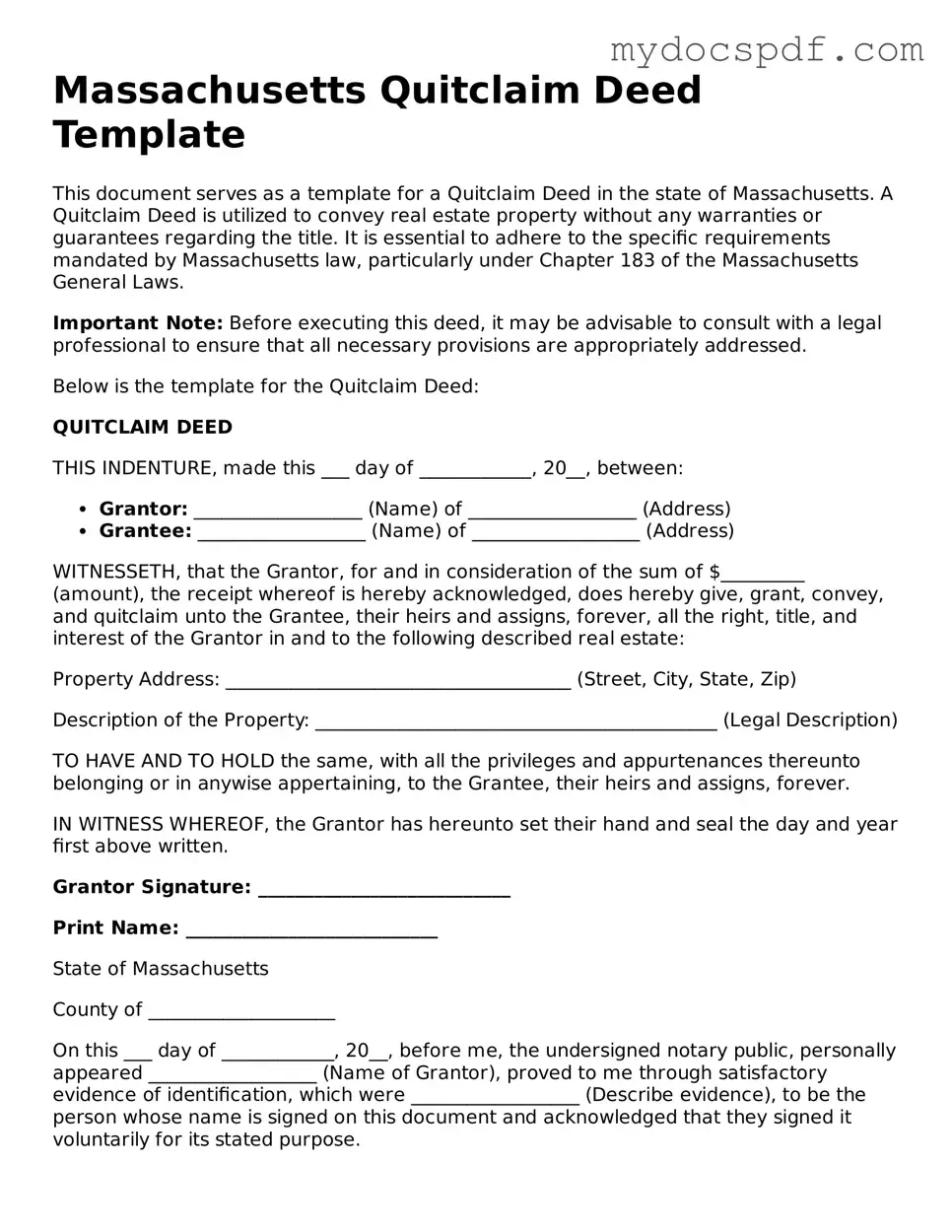Massachusetts Quitclaim Deed Template
This document serves as a template for a Quitclaim Deed in the state of Massachusetts. A Quitclaim Deed is utilized to convey real estate property without any warranties or guarantees regarding the title. It is essential to adhere to the specific requirements mandated by Massachusetts law, particularly under Chapter 183 of the Massachusetts General Laws.
Important Note: Before executing this deed, it may be advisable to consult with a legal professional to ensure that all necessary provisions are appropriately addressed.
Below is the template for the Quitclaim Deed:
QUITCLAIM DEED
THIS INDENTURE, made this ___ day of ____________, 20__, between:
- Grantor: __________________ (Name) of __________________ (Address)
- Grantee: __________________ (Name) of __________________ (Address)
WITNESSETH, that the Grantor, for and in consideration of the sum of $_________ (amount), the receipt whereof is hereby acknowledged, does hereby give, grant, convey, and quitclaim unto the Grantee, their heirs and assigns, forever, all the right, title, and interest of the Grantor in and to the following described real estate:
Property Address: _____________________________________ (Street, City, State, Zip)
Description of the Property: ___________________________________________ (Legal Description)
TO HAVE AND TO HOLD the same, with all the privileges and appurtenances thereunto belonging or in anywise appertaining, to the Grantee, their heirs and assigns, forever.
IN WITNESS WHEREOF, the Grantor has hereunto set their hand and seal the day and year first above written.
Grantor Signature: ___________________________
Print Name: ___________________________
State of Massachusetts
County of ____________________
On this ___ day of ____________, 20__, before me, the undersigned notary public, personally appeared __________________ (Name of Grantor), proved to me through satisfactory evidence of identification, which were __________________ (Describe evidence), to be the person whose name is signed on this document and acknowledged that they signed it voluntarily for its stated purpose.
___________________________
Notary Public
My Commission Expires: _____________________
Accompany this Quitclaim Deed with any additional documentation required by local or state authorities.
